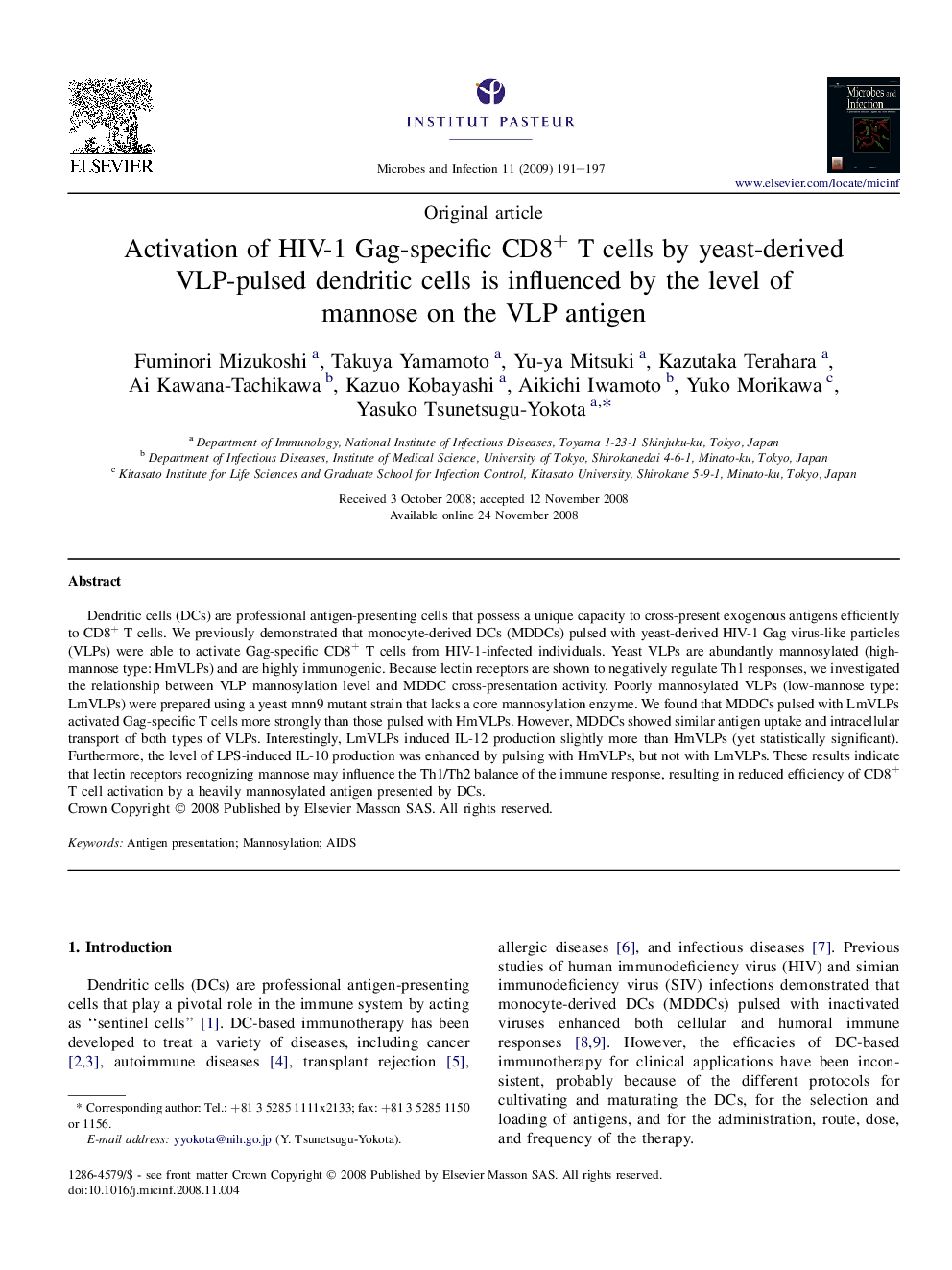| Article ID | Journal | Published Year | Pages | File Type |
|---|---|---|---|---|
| 3415149 | Microbes and Infection | 2009 | 7 Pages |
Dendritic cells (DCs) are professional antigen-presenting cells that possess a unique capacity to cross-present exogenous antigens efficiently to CD8+ T cells. We previously demonstrated that monocyte-derived DCs (MDDCs) pulsed with yeast-derived HIV-1 Gag virus-like particles (VLPs) were able to activate Gag-specific CD8+ T cells from HIV-1-infected individuals. Yeast VLPs are abundantly mannosylated (high-mannose type: HmVLPs) and are highly immunogenic. Because lectin receptors are shown to negatively regulate Th1 responses, we investigated the relationship between VLP mannosylation level and MDDC cross-presentation activity. Poorly mannosylated VLPs (low-mannose type: LmVLPs) were prepared using a yeast mnn9 mutant strain that lacks a core mannosylation enzyme. We found that MDDCs pulsed with LmVLPs activated Gag-specific T cells more strongly than those pulsed with HmVLPs. However, MDDCs showed similar antigen uptake and intracellular transport of both types of VLPs. Interestingly, LmVLPs induced IL-12 production slightly more than HmVLPs (yet statistically significant). Furthermore, the level of LPS-induced IL-10 production was enhanced by pulsing with HmVLPs, but not with LmVLPs. These results indicate that lectin receptors recognizing mannose may influence the Th1/Th2 balance of the immune response, resulting in reduced efficiency of CD8+ T cell activation by a heavily mannosylated antigen presented by DCs.
